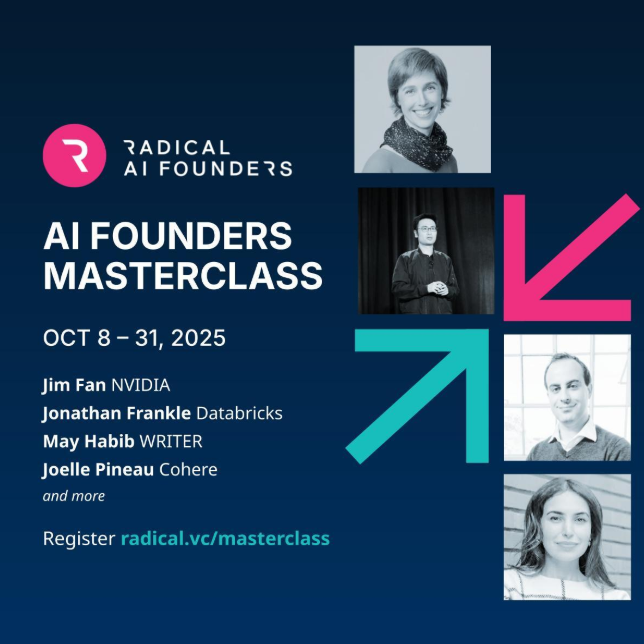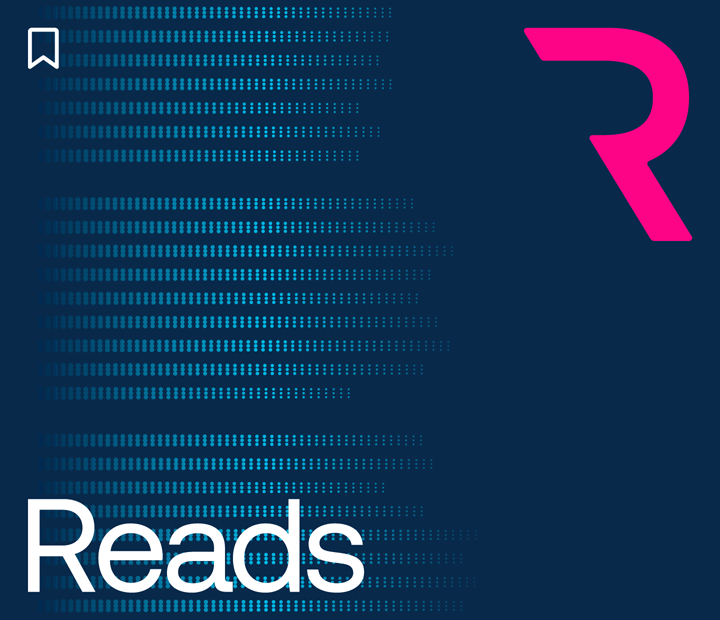In this guest post, George Sivulka, Founder and CEO of Radical portfolio company, Hebbia, argues that in the same way the Internet redistributed the geography of where work gets done, AI is redefining who performs tasks. He explores the rise of “agent employees” — autonomous systems set to fundamentally reshape how organizations staff and operate.
The internet decoupled labor from geography. Now, AI is decoupling labor from humans.
Just as the internet enabled remote work and catalyzed a shift in organizational design, AI will give rise to “agent employees” — autonomous systems capable of executing tasks once reserved for humans, or previously unimaginable altogether.
We’re at the precipice of a new divergence in how organizations structure their labor, and the effects are already starting to take place.
From Place to Personhood
The internet, as a general-purpose technology, transformed the cost and coordination structure of organizations. Remote collaboration tools, cloud platforms, and asynchronous communication allowed firms to separate the performance of work from physical co-location. This enabled three common organizational archetypes: fully in-office, hybrid, and fully remote.
Each firm adopted its model by weighing trade-offs relating to the benefits of working together, managerial oversight, and cultural cohesion.
AI is driving a similar fracture — not in where labor takes place, but in who or what performs it.
Enter the Agent Employee
“Agent employees” are AI systems embedded into business workflows. These are not just tools; they are operational primitives, autonomous or semi-autonomous actors within an organization.
They come in various forms:
- Reactive agents (e.g., RPA bots)
- Deliberative agents (e.g., planning LLMs)
- Cognitive agents (e.g., agents with memory and self-reflection)
- Multi-agent collectives (e.g., coordinated agent swarms)
These agents can perform knowledge work, synthesize information, draft outputs, and execute decisions — at near-zero marginal cost and unbounded scale.
The Organizational Trichotomy
Thus, we are entering an era where organizations will split along a new axis:
- Fully Human Organizations
- Creative industries, bespoke services, high-trust domains.
- Agents may be used for tooling, but not labor substitution.
- Human-Agent Hybrid Organizations
- Centaur models and HITL systems.
- AI augments human cognition, enabling new forms of productivity.
- Fully Agentic Organizations
- AI-native firms where labor is largely automated.
- Human oversight is strategic, not operational.
These structures mirror the internet-era divergence around remote work, but AI’s paradigm shift is deeper: it redefines cognition, not just coordination.
Implications: Designing for Post-Human Cognition
This transformation isn’t simply about automation — it’s about where cognition resides, how accountability is structured, and what it means to trust non-human contributors. Just as some firms thrived in the shift to remote-native models while others recommitted to the office, so too will organizations differentiate based on how — and if — they integrate agentic labor.
Agent employees challenge the foundations of organizational design:
- Where is judgment exercised?
- Who — or what — drives execution?
- How do we govern intelligence that doesn’t think like us, but works for us?
The internet redefined where work happens. Agent employees are redefining who gets to do it. Some firms will remain fully human. Some will go hybrid. Others will scale through networks of intelligent, autonomous agents.
Across every path, we’re not just redesigning workflows — we’re reimagining what makes a team.
The age of organizational divergence has begun — again.
AI News This Week
-
U.S. Unveils Sweeping A.I. Project in Abu Dhabi (The New York Times)
The United States and the UAE signed an agreement creating a 10-square-mile AI campus in Abu Dhabi. The campus will be supplied with American-made AI chips from companies like Nvidia and AMD, making the UAE the first to finalize a chip agreement under Trump’s new bilateral deal framework that replaced Biden’s chip export rules.
-
Silicon Valley is coming for the Pentagon’s $1 Trillion Budget (Bloomberg)
Tech companies are dramatically reshaping the US defense industry, pushing a vision of AI-powered, software-centric warfare that challenges legacy contractors. This movement aims to accelerate innovation and integrate cutting-edge commercial technology into military capabilities. Accelerating adoption of AI tools in the defence industry is a political push to streamline procurement.
-
AI Voice Agents Are Ready to Take Your Call (The Wall Street Journal)
A new generation of customer-service voice bots is transforming call centers, powered by advances in AI. These upgraded systems combine speech-to-text and text-to-speech models with large language models, replacing rigid interactive voice response (IVR) systems that provided limited customer insight. Humanlike AI voice agents have made it increasingly difficult for customers to distinguish them from human representatives. Newer models are voice-native rather than requiring speech-to-text conversion. The technology now features real-time voice interaction, minimal latency, and the ability to handle interruptions and make logical suggestions.
-
How Miami Schools are Leading 100,000 Students into the AI Future (New York Times)
Miami-Dade County Public Schools, the United States’ third-largest district, is pioneering a pedagogy shift by widely integrating generative AI chatbots into high school classrooms, training over 1,000 educators and deploying to 105,000 students. This initiative marks a reversal from earlier bans, driven by a philosophy that students must learn to critically assess and responsibly utilize AI for future job demands, rather than fearing its potential for misuse. Through practical applications like role-playing historical figures and providing instant writing feedback, the district aims to leverage AI as another essential educational tool, emphasizing human oversight and ethical engagement.
-
Research: On the Evaluation of Engineering Artificial General Intelligence (P-1 AI)
Researchers from Radical portfolio company P-1 AI have developed a framework for evaluating engineering artificial general intelligence (eAGI) agents specialized for physical systems engineering. The team proposes a six-level cognitive hierarchy based on Bloom’s taxonomy, progressing from basic recall to advanced synthesis and meta-cognitive reflection. Each level maps to complexity dimensions, including directionality, design behaviour, and problem scope. Using an eVTOL propeller-motor case study, researchers demonstrate assessment from basic calculations to complete system design. This provides a scalable approach to benchmark AI systems capable of expert-level engineering reasoning and design collaboration.
Radical Reads is edited by Ebin Tomy.





